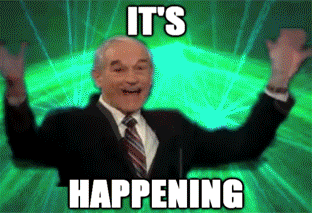fluffydelusions
Member
After some difficulties in pre-production, work is getting underway for Jurassic World, the fourth film in the Jurassic Park series. Director Colin Trevorrow tweeted last night that principle photography for the action flick will begin this April and surprisingly shooting will be done on film, not digital. Trevorrow says that both traditional 35mm film and large-format 65mm film will be used by cinematographer John Schwartzman (Armageddon, The Amazing Spiderman, Seabiscuit).
65mm film is rarely used, particularly in the 4K digital era. Each frame is significantly larger than a traditional 35mm frame, making the film extremely sharp. It's likely that select action scenes will be shot in the large format, similarly to Christopher Nolan's Batman movies. However, it's not yet clear how the film will be released in theaters it's doubtful that it will be projected in 70mm, as few theaters can handle the film. Instead, the movie will probably be offered in IMAX.
Traditionalists will be pleased with the choice to opt for film instead of digital, which has steadily taken over Hollywood in the past few years thanks to its convenience and cost savings. Perhaps more importantly, the move means Jurassic World will visually match the three earlier Jurassic Park films, which date from 1993, 1997, and 2001. Such visual cohesiveness is something that directors like George Lucas and Peter Jackson eschewed in favor of new technology in the Star Wars prequels and The Hobbit, respectively.
Trevorrow has already shown an interest in keeping the fourth film true to the series' roots. In a separate tweet last year, the director said in no uncertain terms that the dinosaurs in the movie would not have feathers despite evidence from paleontologists that many were covered with them.
Jurassic World will star Chris Pratt, and is set to be released on June 12th, 2015. No plot details have been revealed yet, but information from Louisiana's film offices reveal that some of the film will be shot in New Orleans this June.
http://www.theverge.com/2014/2/6/5387406/jurassic-world-will-be-shot-on-film

